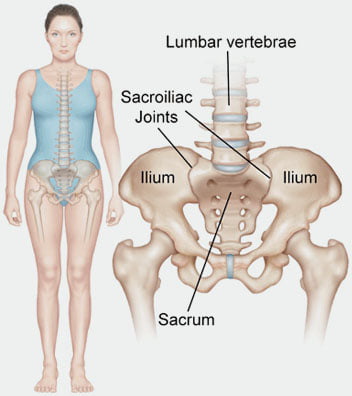Pelvic Tilt vs Spinal Flexion
- Justina

Many well-intentioned individuals believe they are doing a posterior pelvic tilt, but they are not engaging any of the muscles needed to do so and instead are flexing the spine erroneously, creating wear and tear on the disks.
First, we do this on the floor because the joints are looser than standing due to gravitational force and therefore compensatory patterns can be influenced. Neutral position is a desired location to transition through during your day, your walks, your sports, or just getting out of a chair and crossing the room.
Since no muscle acts in isolation, a posterior pelvic tilt is desired to gain control of weak areas, not a position to live in. First, you need to sense what you are doing and what bones are moving. The hamstrings are muscles that attach on your sit bones and onto the outside of your calves, just below your knees. When that muscle is shortened, it pulls the back of your pelvis down (but you don’t get shorter).
There MUST be reciprocation in the body when that happens. The internal obliques are like suspenders that attach from your front hip bone to your bottom ribs. When they shorten, they pull the hip bones up and toward each other. They also bring the bottom ribs down together and towards the pelvis a bit.
Sooooooo, often in class, even though these cues are strongly emphasized, participants DO NOT HAVE ONE ITTY BITTY FIBER ENGAGED of their hamstrings or internal obliques. Sometimes they have such a forward pelvic tilt, the muscles are overstretched and weak. So when I ask people to actually touch their muscles that I have just described and feel if they are on and strong, they don’t feel anything. Muscles must be activated in order to be strengthened. So touch your muscles and see if they are on and strong with sensations increasing as you hold them under tension.
When folks are completely lost, they will instead flex (bend) the spine and push the low back into the floor. This changes disks and does nothing to change our influence of power via pelvic floor and breath. I can’t think of a single discipline that requests that out of a participant. This is not a pelvic tilt! A pelvic tilt must be initiated and controlled with hamstrings and internal obliques. Then you have to be able to breathe in a relaxed state while holding the position.
A posterior pelvic tilt allows the sit bones to come closer together as well as the two hip bones. Along with a gentle, complete exhale, it will move the SI joint properly and stimulate the vagus nerve. Quick, jerky movements can not complete the task. Those types of movements are just reactions and become compensatory patterns.
This is the first lesson in our Pilates classes. The higher demand you place in your exercises without this control does not benefit you or serve your body in any way. Now that you can get into the position, try inhaling without turning those muscles off. Inhale with the tongue on the roof of your mouth, and exhale like you were blowing up a balloon. Can you get better at it with each breath? The more you feel this position and how strong it is, the quicker you can find it in class and hopefully, the main reason: that your body naturally finds it between every stride you take.
Thank you for reading. If you would like to try a Pilates warm up with a slow, strong focus on pelvic tilt watch this video via a free week:
